 W
WRichard Fitzalan, 4th Earl of Arundel, 9th Earl of Surrey, KG was an English medieval nobleman and military commander.
 W
WAnne Boleyn was Queen of England from 1533 to 1536 as the second wife of King Henry VIII. Their marriage, and her execution for treason and other charges by beheading, made her a key figure in the political and religious upheaval that marked the start of the English Reformation. Anne was the daughter of Thomas Boleyn, 1st Earl of Wiltshire, and his wife, Lady Elizabeth Howard, and was educated in the Netherlands and France, largely as a maid of honour to Queen Claude of France. Anne returned to England in early 1522, to marry her Irish cousin James Butler, 9th Earl of Ormond; the marriage plans were broken off, and instead she secured a post at court as maid of honour to Henry VIII's wife, Catherine of Aragon.
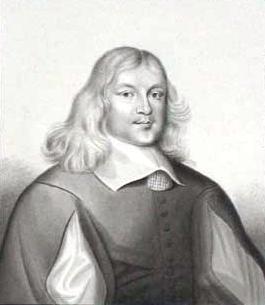 W
WJohn Bradshaw was an English jurist. He is most notable for his role as President of the High Court of Justice for the trial of King Charles I and as the first Lord President of the Council of State of the English Commonwealth.
 W
WArchibald Cameron of Lochiel was a doctor and a prominent leader in the Jacobite rising of 1745. On 7 June 1753, at Tower Hill, he was the last Jacobite to be executed for high treason.
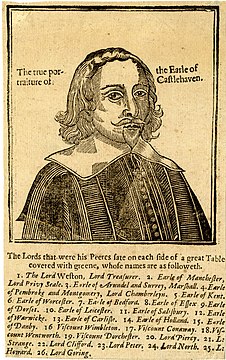 W
WMervyn Tuchet, 2nd Earl of Castlehaven, was an English nobleman who was convicted of rape and sodomy and subsequently executed.
 W
WGeorge Plantagenet, Duke of Clarence, KG, was a son of Richard Plantagenet, 3rd Duke of York, and Cecily Neville, and the brother of English kings Edward IV and Richard III. He played an important role in the dynastic struggle between rival factions of the Plantagenets known as the Wars of the Roses.
 W
WOliver Cromwell was an English general and statesman who led the Parliament of England's armies against King Charles I during the English Civil War and ruled the British Isles as Lord Protector from 1653 until his death in 1658. He acted simultaneously as head of state and head of government of the new republican commonwealth.
 W
WThomas Cromwell, 1st Earl of Essex, was an English lawyer and statesman who served as chief minister to King Henry VIII from 1532 to 1540, when he was beheaded on orders of the king.
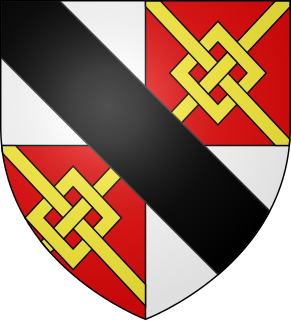 W
WHugh le Despenser, 1st Lord Despenser, also referred to as "the Younger Despenser", was the son and heir of Hugh le Despenser, Earl of Winchester by his wife Isabella de Beauchamp, daughter of William de Beauchamp, 9th Earl of Warwick. He rose to national prominence as royal chamberlain and a favourite of Edward II of England. Despenser made many enemies across the nobility of England which, after the overthrow of Edward, eventually led to him being charged with high treason and ultimately hanged, drawn and quartered.
 W
WLord Edward FitzGerald was an Irish aristocrat and revolutionary who died after stabbing one of the men who attempted to arrest him but died shortly after from wounds received while resisting arrest on a charge of treason.
 W
WCatherine Howard was queen consort of England from 1540 until 1541 as the fifth wife of Henry VIII. She was the daughter of Lord Edmund Howard and Joyce Culpeper, cousin to Anne Boleyn, and niece to Thomas Howard, 3rd Duke of Norfolk. Thomas Howard was a prominent politician at Henry's court, and he secured her a place in the household of Henry's fourth wife, Anne of Cleves, where she caught the King's interest. She married him on 28 July 1540 at Oatlands Palace in Surrey, just 19 days after the annulment of his marriage to Anne. He was 49, and she was still a teenager, at about 17 years old.
 W
WHenry Ireton was an English general in the parliamentary army during the English Civil War, and the son-in-law of Oliver Cromwell.
 W
WWilliam Laud was a clergyman in the Church of England, appointed Archbishop of Canterbury by Charles I in 1633. A key advocate of Charles's religious reforms, he was arrested by Parliament in 1640, and executed towards the end of the First English Civil War in January 1645.
 W
WJohn de la Pole, 1st Earl of Lincoln was a leading figure in the Yorkist aristocracy during the Wars of the Roses.
 W
WJames Scott, 1st Duke of Monmouth, 1st Duke of Buccleuch, KG, PC was a Dutch-born English nobleman. Originally called James Crofts or James Fitzroy, he was born in Rotterdam in the Netherlands, the eldest illegitimate son of Charles II of England, Scotland, and Ireland with his mistress Lucy Walter.
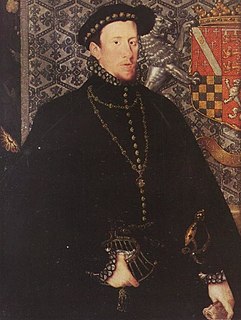 W
WThomas Howard, 4th Duke of Norfolk, was an English nobleman and politician. Although from a family with strong Catholic leanings, he was raised a Protestant. He was a second cousin of Queen Elizabeth I through her maternal grandmother, and held many high offices during her reign.
 W
WJames Drummond, 1st Duke of Perth KT PC, also 4th Earl of Perth and 7th Lord Drummond, was a Scottish statesman, and Jacobite.
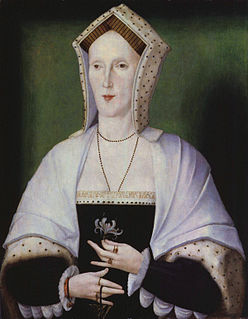 W
WMargaret Pole, Countess of Salisbury, was an English peeress. She was the daughter of George, Duke of Clarence, the niece of kings Edward IV and Richard III. Margaret was one of two women in 16th-century England to be a peeress in her own right with no titled husband. One of the few surviving members of the Plantagenet dynasty after the Wars of the Roses, she was executed in 1541 at the command of Henry VIII, who was the son of her first cousin Elizabeth of York. Pope Leo XIII beatified her as a martyr for the Catholic Church on 29 December 1886.
 W
WThomas Seymour, 1st Baron Seymour of Sudeley, KG was a brother of Jane Seymour, the third wife of King Henry VIII. With his brother, Edward Seymour, 1st Duke of Somerset and Lord Protector of England, he vied for control of their nephew, the young King Edward VI. In 1547 Seymour became the fourth husband of Catherine Parr, who had been the sixth and last wife and queen of Henry VIII. During his marriage to Catherine Parr, Seymour involved the future Queen Elizabeth I, who resided in his household, in flirtatious and possibly sexual behaviour.
 W
WThomas Wentworth, 1st Earl of Strafford, was an English statesman and a major figure in the period leading up to the English Civil War. He served in Parliament and was a supporter of King Charles I. From 1632 to 1640 he was Lord Deputy of Ireland, where he established a strong authoritarian rule. Recalled to England, he became a leading advisor to the King, attempting to strengthen the royal position against Parliament. When Parliament condemned Wentworth to death, Charles reluctantly signed the death warrant and Wentworth was executed.
 W
WHenry Howard, Earl of Surrey, KG,, was an English nobleman, politician and poet. He was one of the founders of English Renaissance poetry and the last known execution by King Henry VIII. He was a first cousin of both Queen Anne Boleyn and Queen Catherine Howard, second and fifth wives of King Henry VIII. His name is usually associated in literature with that of Sir Thomas Wyatt, who was the older poet of the two. He was the son of Thomas Howard, Earl of Surrey and when his father became Duke of Norfolk (1524) the son adopted the courtesy title of Earl of Surrey. Owing largely to the powerful position of his father, Surrey took a prominent part in the Court life of the time, and served as a soldier both in France and Scotland. He was a man of reckless temper, which involved him in many quarrels, and finally brought upon him the wrath of the ageing and embittered Henry VIII. He was arrested, tried for treason and beheaded on Tower Hill.
 W
WHugh le Despenser, sometimes referred to as "the Elder Despenser," was for a time the chief adviser to King Edward II of England.